Ozone generator air purifiers are very advanced devices designed to improve our home air quality by generating ozone molecules. We’ll see what ozone generator air purifiers are, how they work, their benefits, and address common questions surrounding their usage.
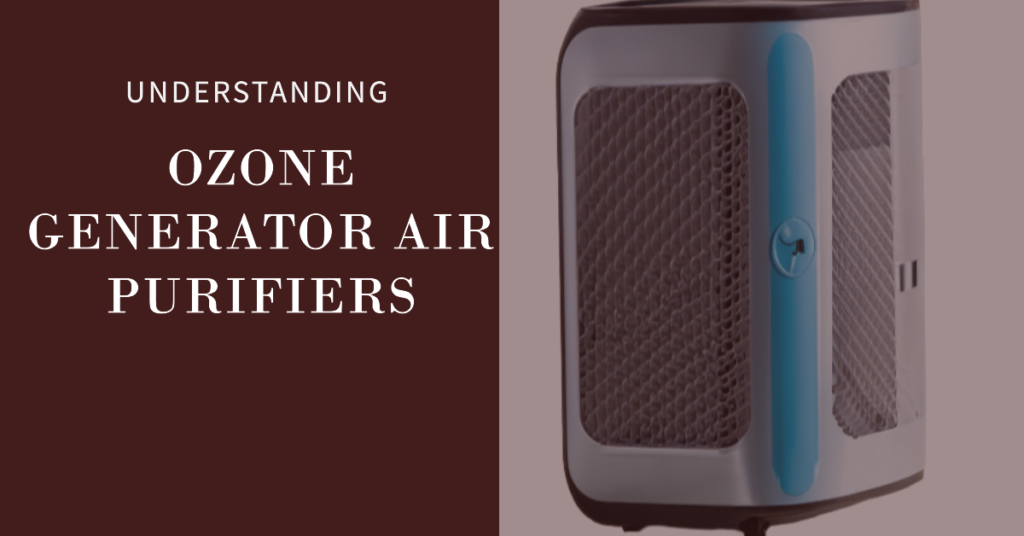
Amidst the ozone craze, there’s a critical need for clarity. Many are left wondering, “What exactly is ozone and how does it impact our health?” It’s a question that opens the door to scientific inquiry, safety considerations and alternative solutions. So, let’s understand step by step, beginning with a basic understanding of ozone.
Ozone generator air purifiers
Ozone generator air purifiers, also known as ozone machines, utilize ozone gas to purify the air. Ozone, a molecule composed of three oxygen atoms (O3), is a powerful oxidant that effectively neutralizes odors, kills bacteria, viruses, and eliminates mold and mildew.
What is ozone (O3)?
Ozone is a molecule made up of three oxygen atoms and it has a unique ability to clean the air. We heard of ozone in the Earth’s atmosphere, where it forms the ozone layer high above us. This ozone layer is like a protective shield that filters out harmful ultraviolet (UV) rays from the sun. In this natural form ozone is called “good ozone” because it keeps us safe from the sun’s harmful effects.
Natural Occurrence of Ozone in the Atmosphere
“Good ozone” occurs naturally in the Earth’s atmosphere, primarily in the stratosphere, which is the layer of air about 10 to 30 miles above the Earth’s surface. This ozone layer is vital for life on our planet because it shields us from the sun’s harmful UV radiation. Without it our life would be much more challenging.
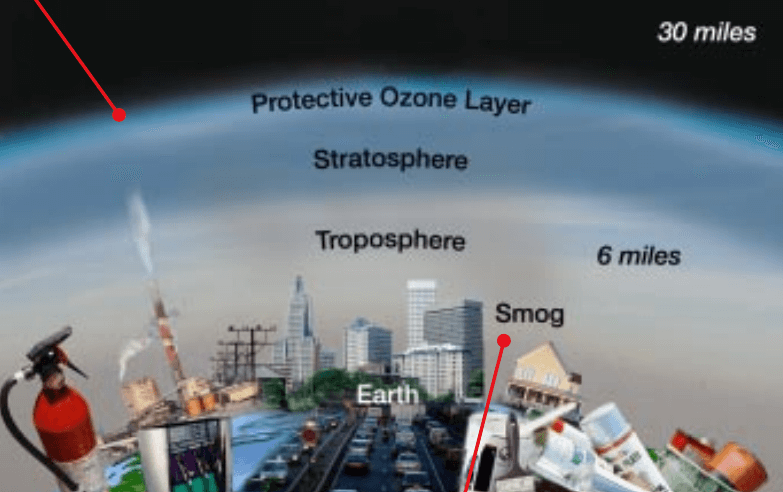
Ozone Generators
Explanation of Ozone Generators and Their Primary Function
Ozone generator are devices designed to create ozone, but they do it differently from how “good ozone” is formed in the atmosphere. Ozone generators use electricity or other methods to produce ozone and they are commonly used to clean the air indoors.
The primary function of ozone generators is to improve indoor air quality by removing odors and killing bacteria and mold. When ozone is released into the air, it can react with pollutants and neutralize them, making the air smell fresher and potentially reducing the presence of harmful microorganisms.
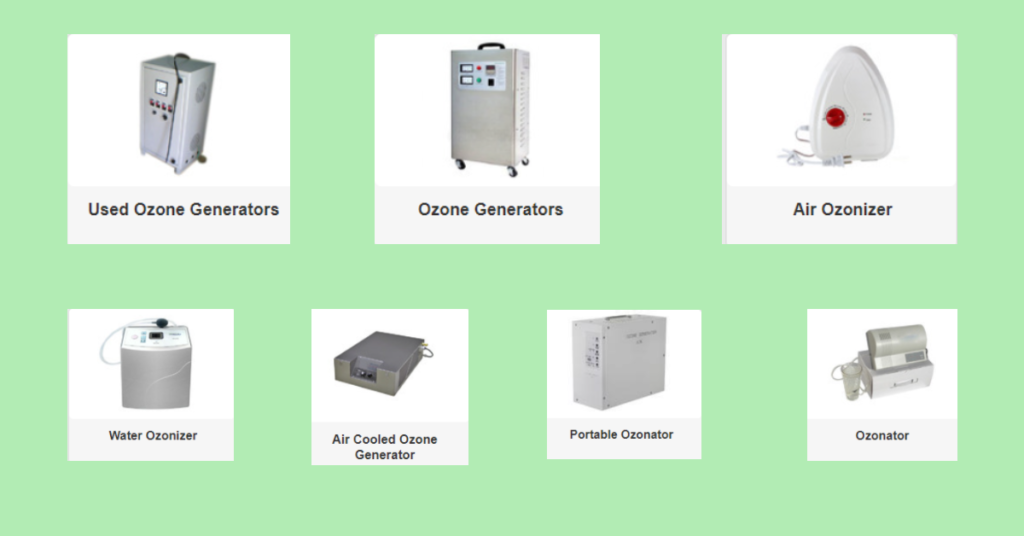
How Ozone Generators Produce Ozone
Ozone generators create ozone through a process called “corona discharge.” Here’s a simplified explanation of how it works:
- Air is drawn into the generator, usually with the help of a fan.
- Inside the generator, the air is exposed to a powerful electric field, which breaks oxygen molecules (O2) in the air.
- These broken oxygen molecules (O) then combine with other oxygen molecules (O2) in the air to form ozone (O3).
- The ozone is released into the room, where it can react with pollutants and particles in the air.
It’s important to note that while ozone generators can be effective at cleaning the air, they should be used with caution and only in specific situations. The reason for this caution is that ozone, while beneficial in the atmosphere, can be harmful when concentrated in indoor spaces.
Ozone Air Purifiers
Ozone air purifiers are devices specifically designed to clean the air by using ozone. Their primary job is to improve the quality of the air you breathe indoors. These purifiers work by releasing ozone into the room, where it interacts with pollutants and particles, neutralizing them and making the air fresher.
Commercial ozone air purifiers are devices designed for use in commercial or industrial settings to improve indoor air quality. These purifiers generate ozone to neutralize or eliminate various airborne contaminants, such as odors, bacteria, mold and viruses.
Negative ion ozone air purifier: A negative ion ozone air purifier is a type of air purification device that uses negative ions and ozone to remove impurities and improve air quality. Negative ions help to remove airborne particles by making them heavier, causing them to settle out of the air. Ozone, on the other hand, is a powerful oxidizing agent that can neutralize odors and break down certain pollutants.
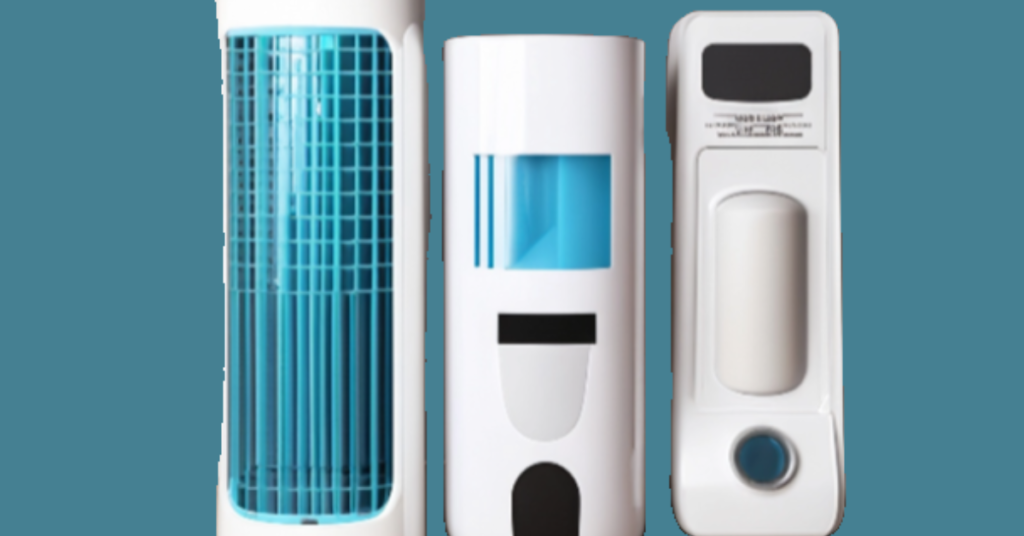
Understanding Ozone Generator Air Purifiers
Ozone generator air purifiers, also known as ozone machines, utilize ozone gas to purify the air. Ozone, a molecule composed of three oxygen atoms (O3), is a powerful oxidant that effectively neutralizes odors, kills bacteria, viruses, and eliminates mold and mildew.
How Do Ozone Generator Air Purifiers Work?
These purifiers work by emitting ozone gas into the air, which reacts with airborne contaminants, breaking them down into simpler, harmless molecules. Ozone molecules oxidize and destroy pollutants, effectively purifying the air. Unlike traditional air purifiers that capture particles in filters, ozone generators alter the chemical composition of contaminants, rendering them inert.
Advantages of Ozone Generator Air Purifiers
- Effective Odor Elimination: Ozone molecules react with odors at a molecular level, effectively neutralizing them rather than masking them.
- Elimination of Microorganisms: Ozone has strong disinfectant properties, capable of killing bacteria, viruses, mold, and mildew, thereby improving overall indoor air quality.
- Chemical-Free Cleaning: Ozone generators operate without the need for additional chemicals or filters, reducing ongoing maintenance costs.
- Versatility: Ozone generators can be used to purify air in various indoor environments, including homes, offices, cars, and recreational vehicles.
How Ozone Generator Air Purifiers Differ from Other Air Purifiers
The key distinction between O3 generator air purifier and other Air Purifiers is in the method they use to clean the air. Ozone air purifiers rely on ozone molecules to do the cleaning, while most other air purifiers use different technologies like HEPA filters, activated carbon filters or UV-C light to remove pollutants.
When it comes to selecting the best ozone air purifier, it’s crucial to consider the available scientific evidence and expert recommendations. While ozone generators have been marketed as effective air purifiers, their claims often exceed their actual capabilities. For comprehensive air purification and pollutant removal, experts typically recommend alternatives like dedicated air purifiers equipped with high-efficiency filters, which have demonstrated superior performance in improving indoor air quality and ensuring the well-being of indoor occupants. Making an informed choice based on reliable information is key to selecting the best ozone air purifier for your specific needs.
Ozone air purifiers are known for their ability to tackle strong odors and potentially harmful microorganisms. However, it’s important to note that they also come with certain risks, which we’ll explore in the next section.
Ozone and Health
Health Effects and Safety Standards Associated with Ozone Exposure
Ozone exposure can have both positive and negative effects, depending on the concentration and where it’s found.
Positive Effects: As mentioned earlier, the ozone layer in the Earth’s stratosphere is beneficial because it shields us from harmful UV radiation. This natural ozone is often referred to as “good ozone.”
Negative Effects: Ozone present in higher concentrations in indoor spaces is harmful. Breathing in elevated levels of ozone can lead to health issues like chest pain, coughing, shortness of breath and throat irritation. It can even worsen conditions like asthma.
Differentiating Between “Good Ozone” and “Bad Ozone”
To make things less confusing, we often distinguish between “good ozone” (the protective layer in the stratosphere) and “bad ozone” (the ozone generated by machines indoors). “Bad ozone” can be problematic when not properly controlled because it can have adverse effects on our health.
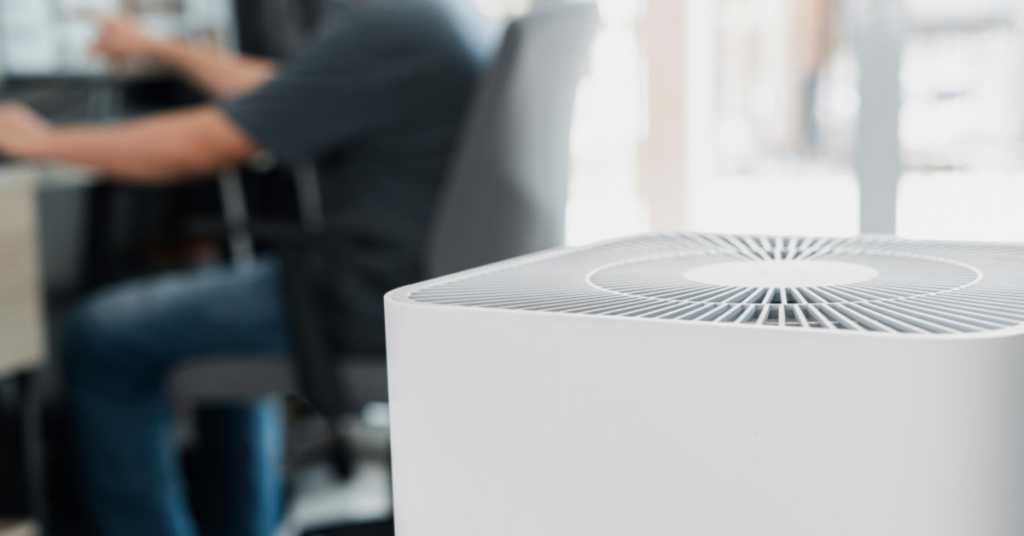
Effectiveness and Safety
Assessing the Effectiveness of Ozone Generators in Controlling Indoor Air Pollution
Ozone generators can be effective at removing odors and killing certain microorganisms in the air. They can leave your indoor spaces smelling fresher and potentially reduce the presence of harmful pollutants.
However, their effectiveness varies depending on factors like the size of the space, the concentration of ozone produced and the specific pollutants present. It’s essential to manage your expectations and understand that while ozone generators can be useful, they might not be a one-size-fits-all solution for every indoor air quality problem.
Safety Considerations and Risks Even When Following Manufacturer Instructions
Safety should always be a top priority when using ozone generators. Even when you follow the manufacturer’s instructions carefully, there are risks associated with these devices. One of the primary concerns is the potential for ozone to reach levels that can be harmful to your health. Breathing in high concentrations of ozone can lead to respiratory issues and exacerbate pre-existing conditions like asthma.
Challenges in Ozone Control
Discussing the Difficulty in Controlling Ozone Exposure with These Devices
One significant challenge with ozone generators is controlling the level of ozone in indoor spaces. Ozone concentration can vary depending on factors like the generator’s power, room size and ventilation. Achieving the right balance is tricky and there’s a risk of overexposure if you’re not careful.
The Suitability of Using Ozone in Unoccupied Spaces
Some people choose to use ozone generators in unoccupied spaces, thinking it’s a way to avoid potential health risks. While this can reduce direct exposure, it’s not a foolproof solution. Ozone can stay in the air even after the generator has been turned off, so returning to a freshly treated room immediately may still expose you to elevated ozone levels.
Ozone Output
How Much Ozone Do Ozone Generators Typically Produce?
The amount of ozone produced by ozone generators can vary significantly. Some models produce relatively low levels, while others can generate higher concentrations. It’s crucial to choose a generator that suits your specific needs and follows safety guidelines.
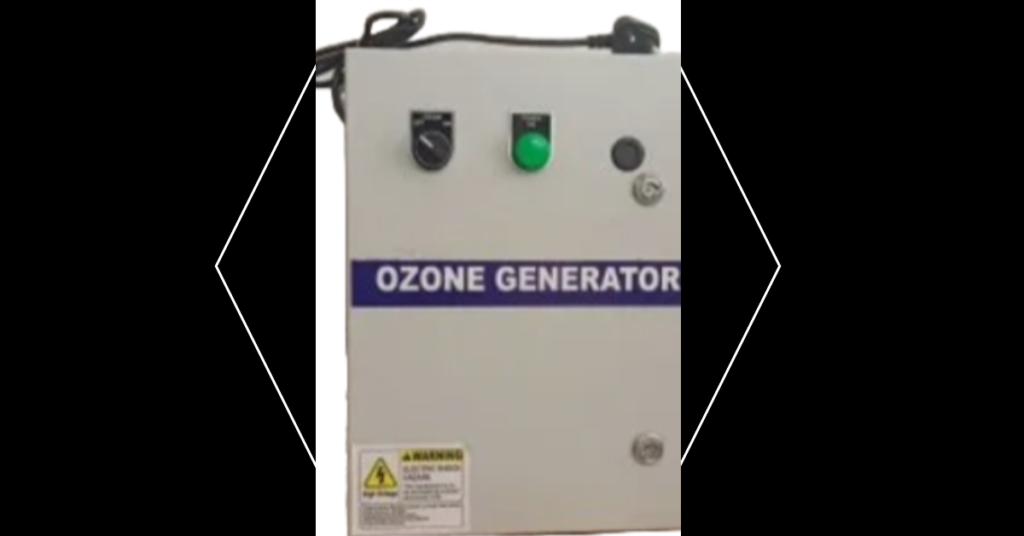
Adverse Health Effects from Exposure to Ozone
Exposure to elevated ozone levels can lead to a range of adverse health effects, including:
- Chest pain
- Coughing
- Shortness of breath
- Throat irritation
- Worsening of respiratory conditions like asthma
Understanding the potential risks and the ozone output of your generator is vital to ensure your well-being and that of those around you.
Regulatory Perspectives
Opinions from Regulatory Bodies like the EPA and CARB
Regulatory bodies play a crucial role in assessing the safety and effectiveness of ozone generators. Here’s what some of these organizations have to say:
- Environmental Protection Agency (EPA): The EPA advises against the use of ozone generators for improving indoor air quality. They emphasize the potential health risks associated with ozone exposure and recommend alternative air cleaning technologies.
- California Air Resources Board (CARB): CARB has stringent regulations regarding ozone generators and air purifiers. They require these devices to meet specific ozone emission limits. Additionally, CARB certifies air cleaners that adhere to their guidelines. If you live in California or want to ensure the highest safety standards for your air cleaner, consider choosing a California Certified Air Cleaner.
Common Uses
Practical Applications of Ozone Generators
Ozone generators have a range of practical uses in various settings:
- Odor Removal: Ozone can effectively eliminate stubborn odors, such as those from pets, cooking and cigarette smoke. It breaks down odor-causing molecules, leaving the air smelling fresher.
- Disinfection: Ozone can kill bacteria, viruses and fungi, making it useful in environments where hygiene is crucial, like hospitals and laboratories.
- Mold Control: Ozone can inhibit mold growth and reduce existing mold infestations. It’s often used in damp or humid areas susceptible to mold growth.
- Air Purification: Some ozone generators are designed for general air purification, targeting a range of indoor air pollutants. However, it’s essential to use them with caution and follow safety guidelines.
Proper Usage
Guidelines on the Correct and Safe Usage of Ozone Generators
Using ozone generators safely and effectively requires adherence to essential guidelines:
- Read the Manufacturer’s Instructions: Always start by reading and following the manufacturer’s guidelines. They provide specific recommendations for safe use.
- Ventilation: Ensure proper ventilation when using ozone generators. Open windows and doors to allow fresh air to circulate, helping to dissipate ozone.
- Occupancy: Ozone generators should be used in unoccupied spaces. Avoid exposing people and pets to elevated ozone levels.
- Timer Settings: Use the built-in timer settings to control ozone output. Running the generator continuously at high levels can be harmful.
- Maintenance: Regularly clean and maintain your ozone generator as per the manufacturer’s instructions to ensure it operates efficiently and safely.
Conclusion
Ozone generator air purifiers offer a unique approach to indoor air purification, effectively neutralizing odors, killing microorganisms, and improving overall air quality. However, it’s essential to use these devices with caution, following safety guidelines to prevent potential health risks associated with ozone exposure.
Frequently Asked Questions (FAQ’s)
Are ozone-producing air purifiers safe?
Ozone Generator Air Purifiers are not considered safe for indoor use. They work by emitting ozone into the air, which can be harmful to your health. Ozone, even at low levels, can irritate your lungs, throat and eyes. Long-term exposure to ozone may worsen respiratory conditions like asthma and increase the risk of lung infections.
Which is better, an air purifier or an ozone generator?
An air purifier is generally a better choice for improving indoor air quality. Air purifiers use various technologies, such as HEPA filters, activated carbon or UV-C light, to remove particles, allergens and pollutants from the air without producing harmful ozone. Ozone generators, on the other hand, create ozone, which can have adverse health effects and is not recommended for most indoor settings.
Can you smell ozone from an air purifier?
You should not be able to smell ozone from a safe air purifier. Air purifiers are designed to be odorless while effectively removing contaminants from the air. If you detect a strong, pungent odor resembling chlorine or a fresh electrical smell, it may indicate the presence of ozone, which could be emitted by an ozone generator, not a typical air purifier.
Do ozone generators really work?
Ozone generators can eliminate odors in the short term by oxidizing molecules that cause the odor. However, their effectiveness is limited and they are not recommended for air purification purposes. The potential health risks associated with ozone exposure, including respiratory problems, outweigh the temporary odor-removing benefits.
What are the side effects of ozone air purifiers?
Ozone air purifiers can have several adverse side effects, including respiratory irritation, throat discomfort, coughing and exacerbation of existing respiratory conditions like asthma. Long-term exposure to ozone emitted by these devices can lead to serious health issues and should be avoided.
What are the side effects of ozone air quality?
Poor air quality with elevated ozone levels can have various health effects, including respiratory problems, eye irritation, chest pain and worsened cardiovascular conditions. It can also contribute to the formation of smog and harm the environment.
What is a safer alternative to ozone generators?
Safer alternatives to ozone generators for air purification include HEPA air purifiers, activated carbon filters and UV-C purifiers. These technologies effectively remove pollutants without emitting harmful ozone.
What are the disadvantages of an ozone machine?
The disadvantages of ozone machines include potential health risks, adverse effects on indoor air quality, limited effectiveness in odor removal and their contribution to ozone pollution if used inappropriately indoors.
What is the best alternative to an ozone generator?
The best alternative to an ozone generator is a high-quality HEPA air purifier. HEPA filters can efficiently capture particles and allergens, providing effective air purification without generating ozone or causing health concerns.
Does a HEPA filter remove ozone?
No, HEPA filters are not designed to remove ozone from the air. HEPA filters primarily capture solid particles like dust, pollen and pet dander, but they are not effective at removing gaseous pollutants like ozone.
How long should you wait after using an ozone generator?
After using an ozone generator in a room, it’s recommended to wait at least several hours to allow the ozone levels to return to safe levels. Proper ventilation and thorough airing out of the space are essential to ensure safety before reoccupying the room.
Do HEPA air purifiers produce ozone?
HEPA air purifiers do not produce ozone. They rely on mechanical filtration to remove particles from the air and do not emit harmful gases like ozone.
Do ozone generators get rid of mold?
Ozone generators can eliminate mold spores in the air and on surfaces. However, their use for mold remediation is not recommended due to the health risks associated with ozone exposure. Safer alternatives, such as HEPA filtration and mold-specific treatments, are preferred.
Why would you want an ozone generator?
Ozone generators are used in specific industrial and commercial applications, such as odor removal in unoccupied spaces, disinfection of water and wastewater treatment. They should not be used in occupied indoor environments due to health concerns.
Are ozone generators FDA approved?
Ozone generators are not typically approved by the FDA for general indoor air purification or medical use due to their potential health risks. The FDA may regulate specific ozone-generating devices used in medical settings, but they are not endorsed for general consumer use.
.
DheerajSonwane is a dedicated writer with expertise in air purification technologies. He focuses on providing well-researched content to help readers improve indoor air quality in homes and businesses. As the lead writer at AirPurifierMaster.com, Dheeraj offers practical advice his insightful reviews guide individuals in choosing the best air purifiers for their needs.

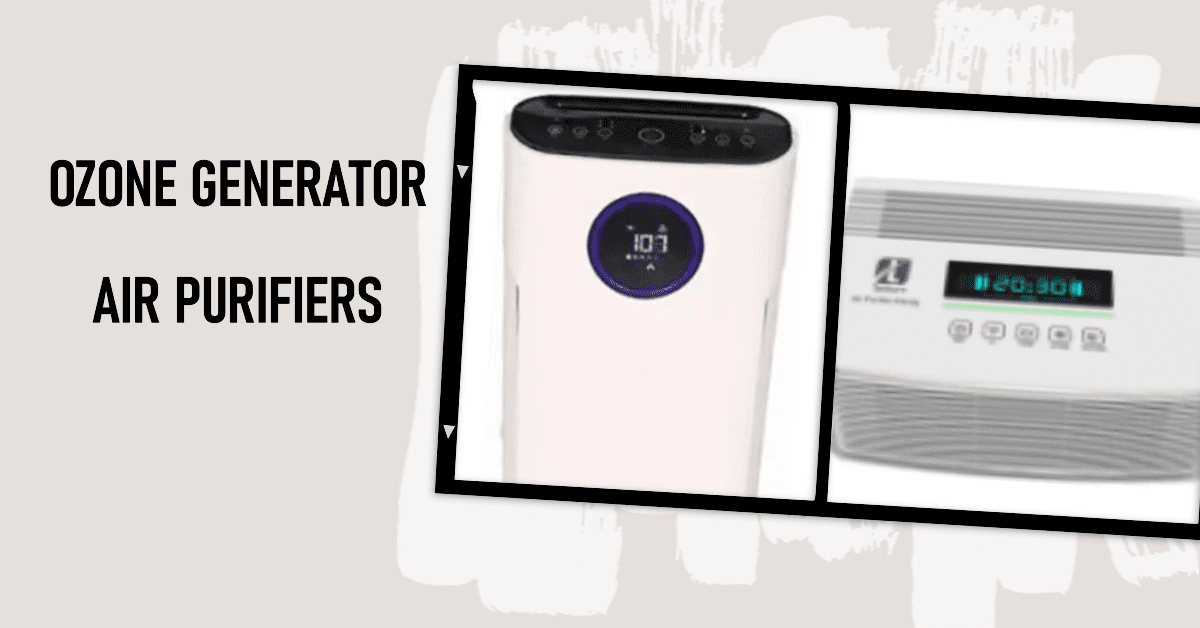
2 thoughts on “Ozone Generator Air Purifiers: A comprehensive guide”